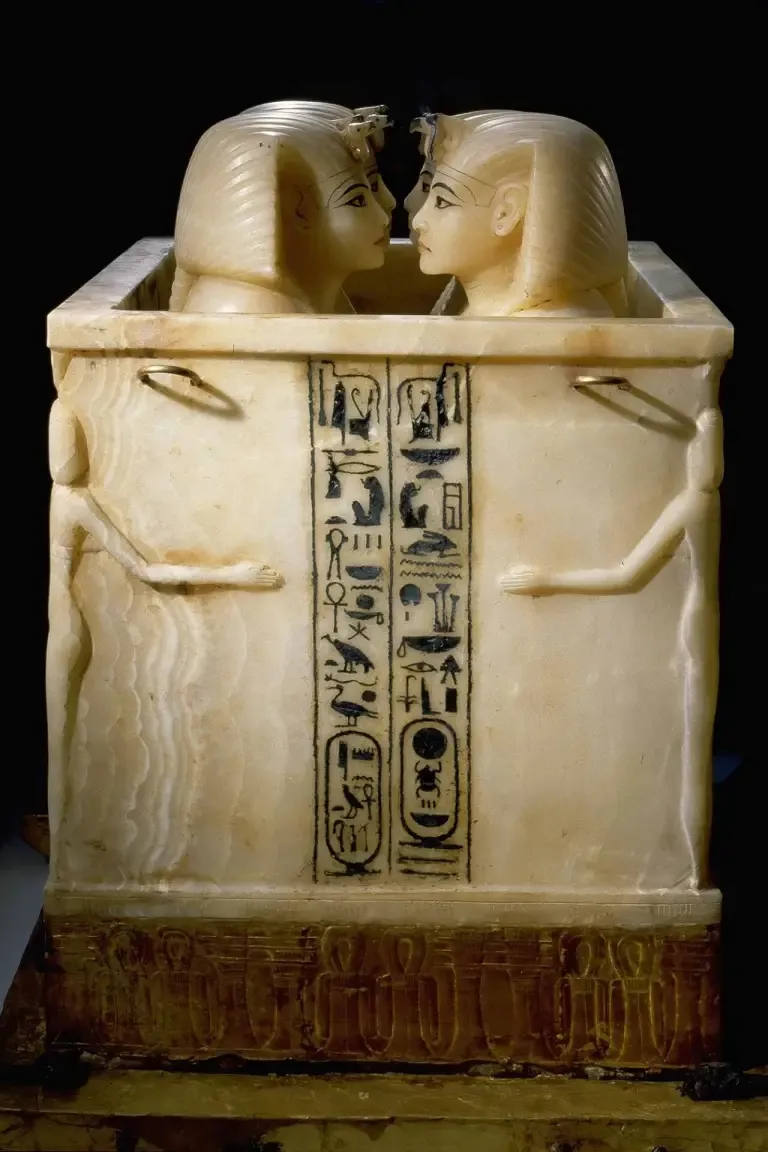Among the extraordinary treasures of King Tutankhamun’s tomb lies an alabaster masterpiece known as the Canopic Chest. This remarkable artifact not only showcases the exquisite craftsmanship of ancient Egyptian artisans but also provides profound insights into the funerary practices and religious beliefs of the time.
The Canopic Chest of Tutankhamun is esteemed as one of the most exquisite pieces within the king’s extensive collection of treasures. Crafted from pristine alabaster, the chest exudes an ethereal beauty, with its translucent surface glowing with a soft, otherworldly light. The interior of the chest is meticulously divided into four compartments, each designed to house the preserved internal organs of the pharaoh.

Each compartment of the Canopic Chest is adorned with a lid intricately carved to resemble the head of King Tutankhamun. These lids, with their detailed and lifelike depictions, serve not only as protective covers but also as symbols of the king’s enduring essence and divine nature. Beneath these lids, the cylindrical hollows held the pharaoh’s organs, which were carefully mummified and placed within to ensure his resurrection in the afterlife.
Adding to the chest’s sacred significance are the figures carved at its four corners, representing the goddesses Isis, Nephthys, Neith, and Serket. These deities, depicted in high relief, stretch out their arms in a protective gesture, guarding the contents of the chest with their divine presence. Each goddess played a crucial role in ancient Egyptian mythology and religion, embodying aspects of protection, magic, and the afterlife. This artifact from the late 18th Dynasty during the reign of Tutankhamun (circa 1332-1323 BC) was discovered in the Tomb of Tutankhamun (KV62) in the Valley of the Kings, West Thebes, and is now housed in the Egyptian Museum in Cairo.









